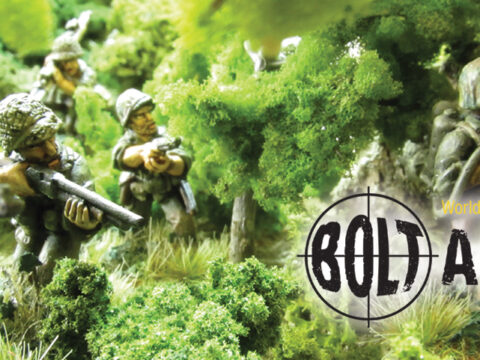Warlord Kommandant Stallard seems to have changed his muse and has gone from a British Army bronze green phase to a panzer grey period. At least that’s what he is banging out at a rate of knots from Schloss Stallard.
This week its more, yet more, early German heavy stuff, ranging from the Adler armoured car to the deadly PaK 38 50mm anti-tank gun and finally a behemoth of infantry guns the monstrous sIG33 150mm howitzer.
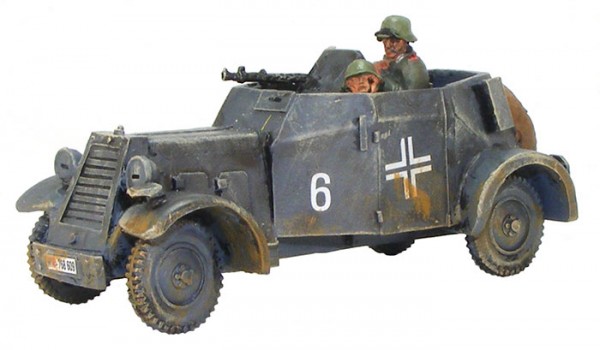
John has used a panzer grey that was standard for the German forces during the early period of WW2, though he lightens it up with some white mixed so it doesn’t appear too dark. If it were the Poland campaign or much of the French actions he could have added blotches of chocolate brown to the vehicle – something that was common (in fact this was obligatory, in early Panzer units), a look that is often not picked up upon in black and white photography.
These, however, are destined for the Russian front. The Adler seemed to perform adequately in the early stages of the war, though its thin armour, open top and lack of a useful gun would mean that it was soon superseded by more developed armoured cars. The white crosses mark it as a German vehicle are of an early type, the crew have clearly not had orders to change to the more common black and white cross that came into service later. Warlord do a fabulous range of decals (transfers if you are British and of a certain age…) including the really useful number plates for the front and rear of soft-skin vehicles.
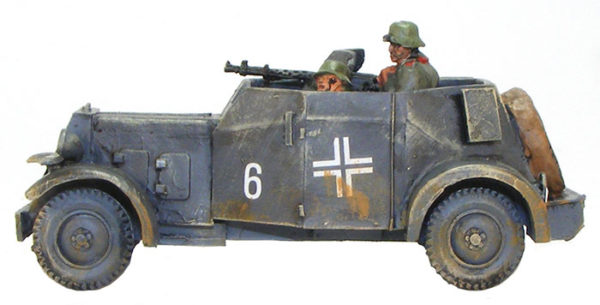
The Adler (eagle) is a reconnaissance vehicle – cheap in points and using the Recce rule, a popular choice in a Bolt Action force at Warlord Games HQ. A good splash of mud around the wheel arches and a dry brush of light grey to simulate dust, always to be found on a vehicle, and its off to reconnoitre the enemy lines.
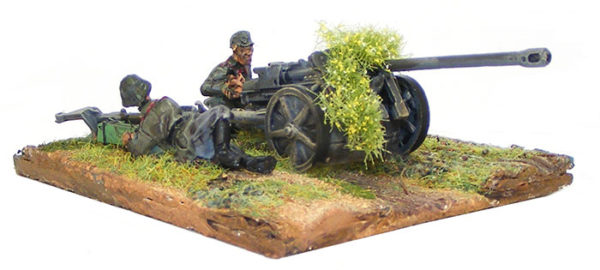
To cover its advance, John has painted up a PaK 38, a lethal long-barrelled anti-tank gun that saw service from 1941, just about in time to give the hard pressed infantry something to fight back with against the devastating KV-1s and T-34s of the Russians. The gun had good hitting power, rapidity of shooting and a low silhouette, ideal for tankbusting. To enhance survivability, the crew have camouflaged their gun shield and barrel with local bushes, wiring it to the metal, a common trick with PaK crews. John used some of the Army Painter range of grasses, vines and ivy. Check them out they are so easy to use and look amazing on the finished model. Study any photos of mid and late war German vehicles and you will see that the troops used this natural foliage in huge amounts – better some hard work than being spotted by aircraft or artillery. A neat scenic base with tufts of summer grass make it a pleasing piece.
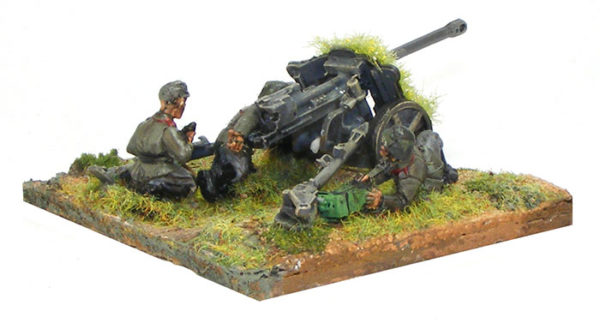
And to finish off this trio, a massive 150mm infantry gun. This was the largest gun that could be called an infantry gun and it is amazing that they were sometimes taken right into the front lines, often firing over open sights. This beast looks most impressive and is deadly on the tabletop, inflicting horrid casualties if it hits (it’s a good idea to go Down if you are on the receiving end of a shot!).
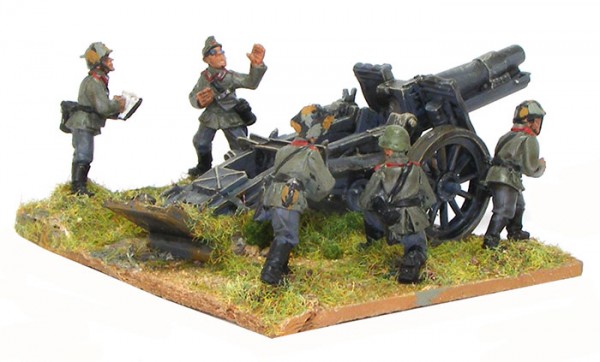
A nice scenic base and an animated five man crew make this a really striking model. We like the range/sighting poles picked out in red and white on the gun shield. John has marked the gun with a number, where usually a letter was more the rule. We will forgive him as he is elderly and the more you look into WW2, the more you realise that rules were made to be broken, even in the strict German army. A good dry brushing in off white both simulated dust and picked out the astonishing level of surface detail on the gun – rivets, clasps etc. It’s a lovely model and with a range reaching right across the board, it’s not something to be ignored if your enemy has one.
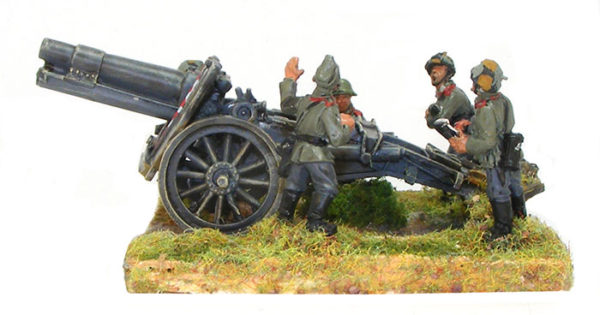
John was last spotted with an allied landing craft and a giant German Würzburg radar station. He must be plotting something odd…






